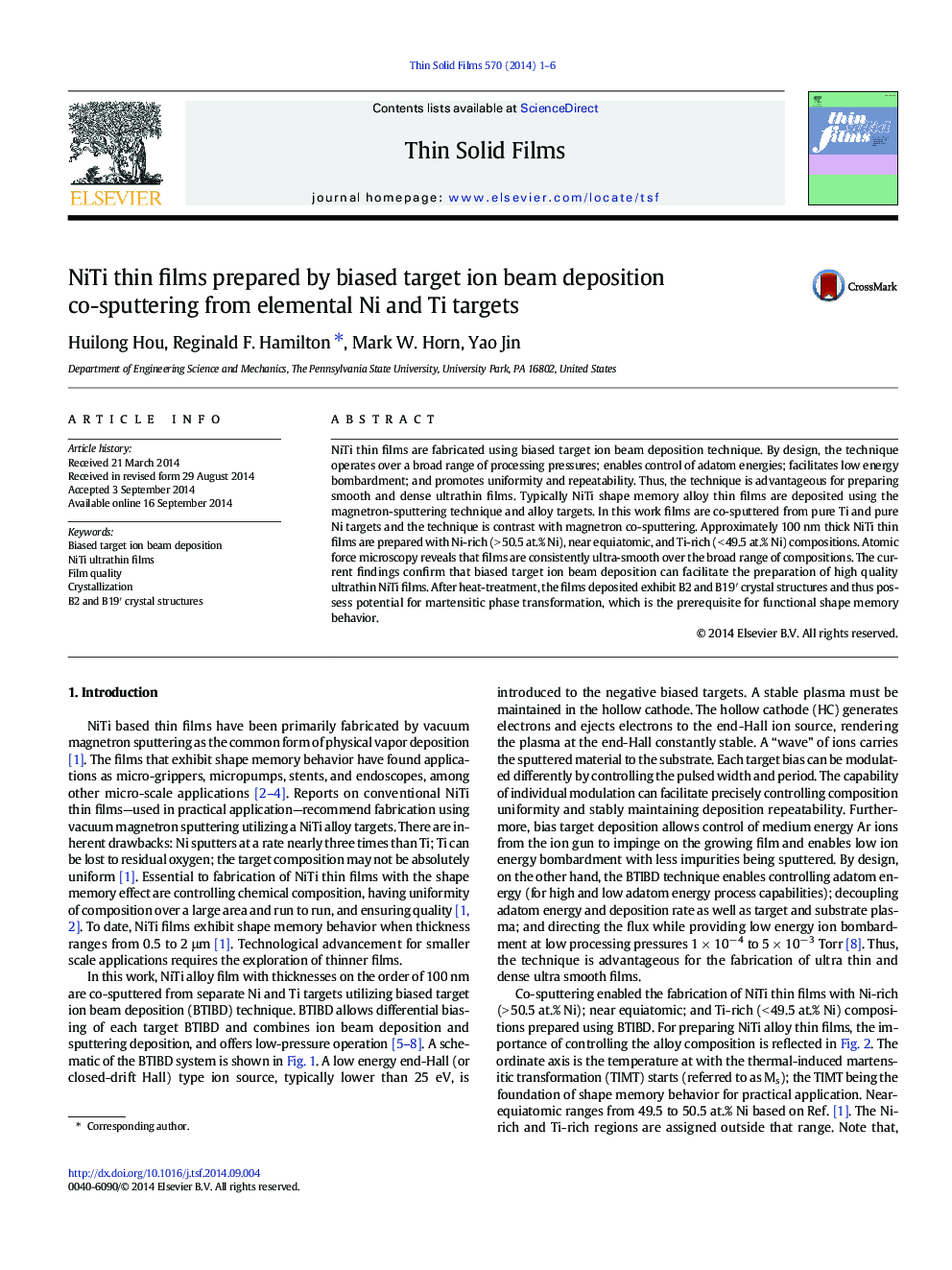| Article ID | Journal | Published Year | Pages | File Type |
|---|---|---|---|---|
| 10669743 | Thin Solid Films | 2014 | 6 Pages |
Abstract
NiTi thin films are fabricated using biased target ion beam deposition technique. By design, the technique operates over a broad range of processing pressures; enables control of adatom energies; facilitates low energy bombardment; and promotes uniformity and repeatability. Thus, the technique is advantageous for preparing smooth and dense ultrathin films. Typically NiTi shape memory alloy thin films are deposited using the magnetron-sputtering technique and alloy targets. In this work films are co-sputtered from pure Ti and pure Ni targets and the technique is contrast with magnetron co-sputtering. Approximately 100Â nm thick NiTi thin films are prepared with Ni-rich (>Â 50.5Â at.% Ni), near equiatomic, and Ti-rich (<Â 49.5Â at.% Ni) compositions. Atomic force microscopy reveals that films are consistently ultra-smooth over the broad range of compositions. The current findings confirm that biased target ion beam deposition can facilitate the preparation of high quality ultrathin NiTi films. After heat-treatment, the films deposited exhibit B2 and B19â² crystal structures and thus possess potential for martensitic phase transformation, which is the prerequisite for functional shape memory behavior.
Keywords
Related Topics
Physical Sciences and Engineering
Materials Science
Nanotechnology
Authors
Huilong Hou, Reginald F. Hamilton, Mark W. Horn, Yao Jin,
